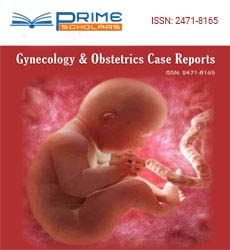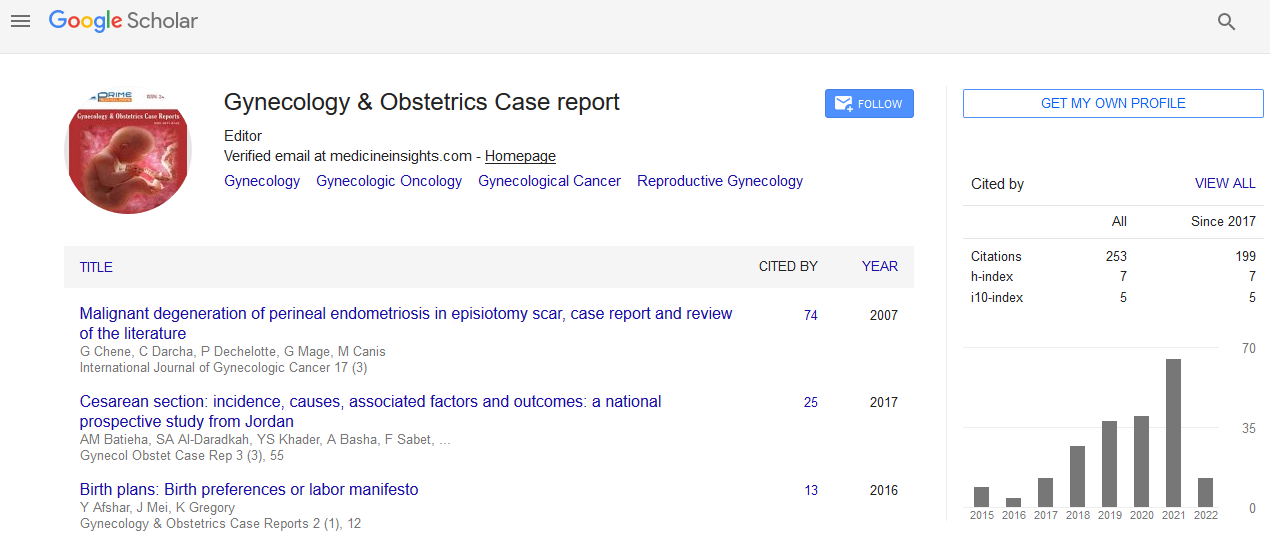Short Communication - (2025) Volume 11, Issue 2
Pelvic Organ Prolapse: Surgical Techniques and Long-Term Outcomes
Emery Athena*
Department of Women’s Health, Parc Tauli University Hospital, Sabadell, 08280 Barcelona, Spain
*Correspondence:
Emery Athena, Department of Women’s Health, Parc Tauli University Hospital, Sabadell, 08280 Barcelona,
Spain,
Email:
Received: 27-Dec-2024, Manuscript No. ipgocr-25-22708;
Editor assigned: 30-Dec-2024, Pre QC No. ipgocr-25-22708(PQ);
Reviewed: 10-Jan-2024, QC No. ipgocr-25-22708(Q);
Revised: 17-Jan-2025, Manuscript No. ipgocr-25-22708(R);
Published:
24-Jan-2025
INTRODUCTION
Pelvic Organ Prolapse (POP) is a common condition that occurs when the muscles and tissues supporting the pelvic organs such as the bladder, uterus, rectum and vagina become weakened or damaged. This condition results in the descent or herniation of these organs into or through the vaginal canal, causing a variety of symptoms including pelvic pressure, urinary and fecal incontinence, sexual dysfunction and a visible bulge or protrusion from the vagina. POP significantly impacts quality of life and is especially prevalent among postmenopausal women, those who have had multiple vaginal deliveries, or individuals with connective tissue disorders [1]. The management of pelvic organ prolapse depends on the severity of the condition, the patientâ??s symptoms and their desire for future childbearing and overall health status. While conservative treatments such as pelvic floor exercises, pessary use and lifestyle modifications are often first-line therapies, surgical intervention remains the definitive treatment for women with moderate to severe prolapse or those who do not respond to non-surgical measures [2].
DESCRIPTION
Surgical techniques for POP have evolved considerably over the past several decades, offering both reconstructive and obliterative options. Reconstructive surgery aims to restore the normal anatomy and function of the pelvic floor while preserving vaginal capacity, making it suitable for sexually active women. Obliterative procedures, on the other hand, involve closing off part or all of the vaginal canal and are generally reserved for older women who are no longer sexually active [3]. One of the most common reconstructive surgeries is anterior and posterior colporrhaphy, which addresses cystocele and rectocele, respectively. These procedures involve the plication of the endopelvic fascia to reinforce the anterior and posterior vaginal walls. Despite being widely practiced, traditional colporrhaphy has a significant recurrence rate, often necessitating repeat surgeries.
For uterine prolapse, options include vaginal hysterectomy combined with pelvic floor repair or uterine-preserving procedures such as sacrospinous ligament fixation or uterosacral ligament suspension. Uterine preservation is increasingly favored among women who prefer to maintain their reproductive organs, provided the uterine support structures are amenable to repair. Another major advancement is sacrocolpopexy, typically performed via open abdominal, laparoscopic, or robotic-assisted approaches. This technique involves suspending the vaginal apex to the sacral promontory using synthetic mesh, which offers superior long-term anatomical and functional outcomes compared to native tissue repairs. Sacrocolpopexy is considered the gold standard for apical prolapse, particularly in younger, sexually active women [4].
The use of mesh in prolapse repair, however, has been controversial due to complications such as mesh erosion, infection, pain and dyspareunia. In response to these concerns, the U.S. Food and Drug Administration (FDA) issued warnings and subsequently restricted the use of transvaginal mesh for prolapse repair. As a result, there has been a renewed interest in native tissue repairs and a push for more rigorous evaluation of new mesh products through controlled clinical trials. Obliterative procedures such as colpocleisis are highly effective in older women who are not concerned about maintaining vaginal function. These surgeries involve closing off the vaginal canal to support prolapsing organs and offer low complication and recurrence rates. LeFort colpocleisis, for instance, is associated with high patient satisfaction and short recovery times. Long-term outcomes of POP surgery depend on multiple factors including the type of procedure, the use of mesh or native tissue, the patientâ??s age, comorbidities and adherence to postoperative care. Studies have shown that while recurrence rates can be high with native tissue repairs, patient satisfaction often remains high due to symptom relief. Mesh-based repairs like sacrocolpopexy have demonstrated better durability in the long term, although they carry a higher risk of complications. Reoperation rates for POP are non-negligible, with some studies suggesting up to 30% of women undergoing a second surgery. Factors associated with higher recurrence include obesity, chronic cough, constipation and poor tissue quality. Therefore, preoperative counseling and individualized treatment planning are crucial in optimizing outcomes.
As surgical techniques continue to improve and more long-term data become available, future directions in POP management include the development of safer, more durable materials, minimally invasive techniques and regenerative therapies aimed at restoring native pelvic support structures. Additionally, patient-centered care that balances anatomical correction with functional outcomes will remain a cornerstone in the management of pelvic organ prolapse [5].
CONCLUSION
Pelvic Organ Prolapse (POP) presents a significant challenge in women's health, with surgical intervention often required for durable symptom relief and functional restoration. Advances in surgical techniques, including both native tissue repair and mesh-based approaches, have expanded the therapeutic landscape, offering tailored options based on patient-specific factors. While minimally invasive procedures have shown promising short-term benefits, long-term outcomes vary depending on the technique employed, surgeon expertise and patient comorbidities. Continued comparative research and long-term follow-up studies are essential to refine surgical strategies, reduce recurrence rates and enhance quality of life for affected individuals. A patient-centered, evidence-based approach remains vital in achieving optimal surgical outcomes in POP management.
Acknowledgment
None.
Conflict of Interest
None.
REFERENCES
- Niang I, Kayembe A (2024) “Accidental computed arthrography” of an open knee joint injury cleaned with povidone-iodine solution. PAMJ Clin Med 14 (1).
Cross Ref
- Madjunkov M, Dviri M, Librach C (2020) A comprehensive review of the impact of COVID-19 on human reproductive biology, assisted reproduction care and pregnancy: A Canadian perspective. J Ovarian Res 13(1):1-8.
Google Scholar Cross Ref Indexed at
- Li K, Chen G, Hou H, Liao Q, Chen J, et al. (2021) Analysis of sex hormones and menstruation in COVID-19 women of child-bearing age. Reprod Biomed Online 42(1):260-267.
Google Scholar Cross Ref Indexed at
- Sharma P, Sharma S, Singh N (2020) COVID-19: Endangering women's mental and reproductive health. Indian J Public Health 64(6):251-252.
Google Scholar Cross Ref Indexed at
- Sánchez OR, Vale DB, Rodrigues L, Surita FG (2020) Violence against women during the COVIDâ?19 pandemic: An integrative review. Int J Gynaecol Obstet 151(2):180-7.
Google Scholar Cross Ref Indexed at
Citation: Athena E. (2025) Pelvic Organ Prolapse: Surgical Techniques and Long-Term Outcomes. Gynecol Obstet Case Rep. Vol.11 No.2:18.
Copyright: © Athena E. This is an open-access article distributed under the terms of the Creative Commons Attribution License, which permits unrestricted use, distribution and reproduction in any medium, provided the original author and source are credited.

